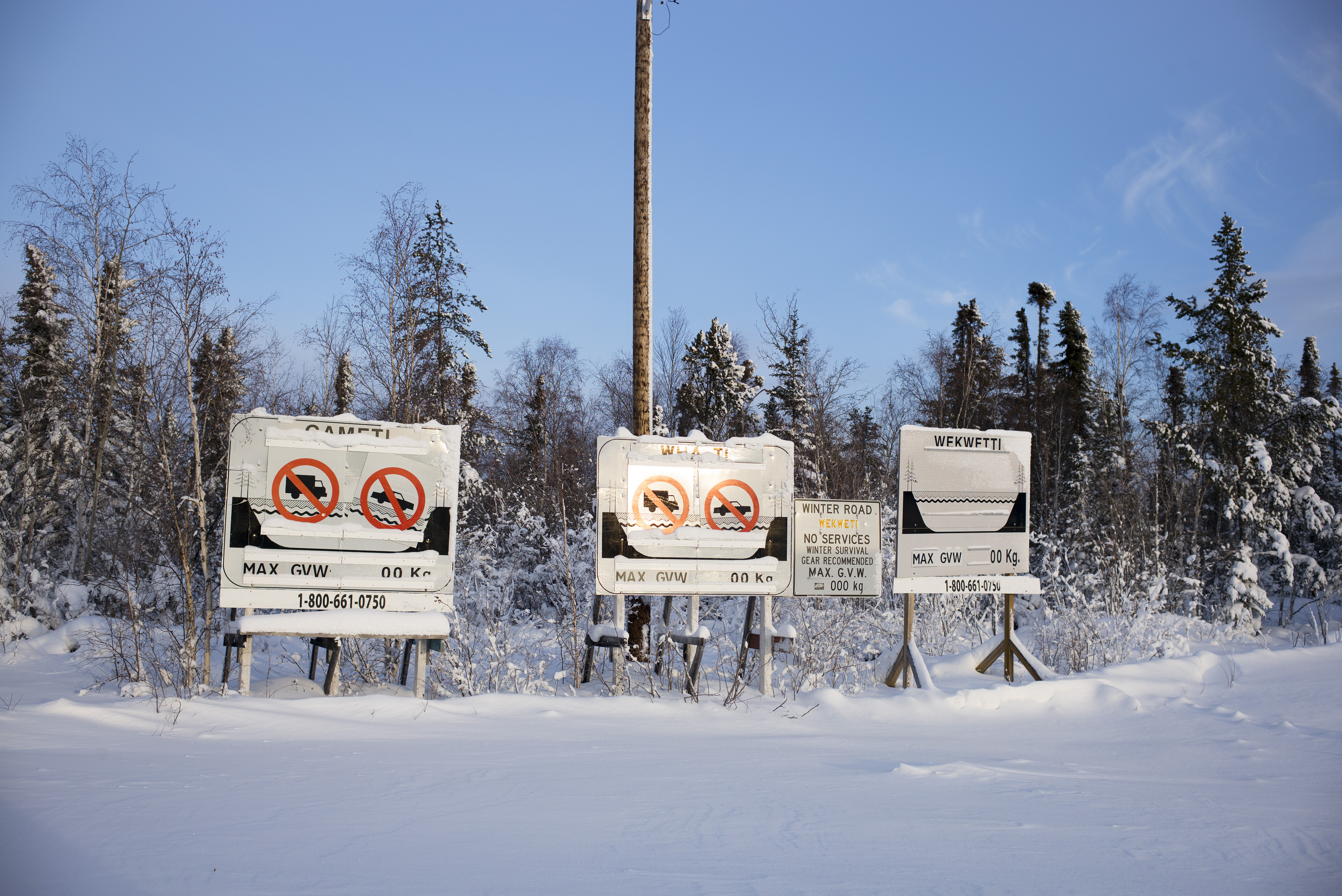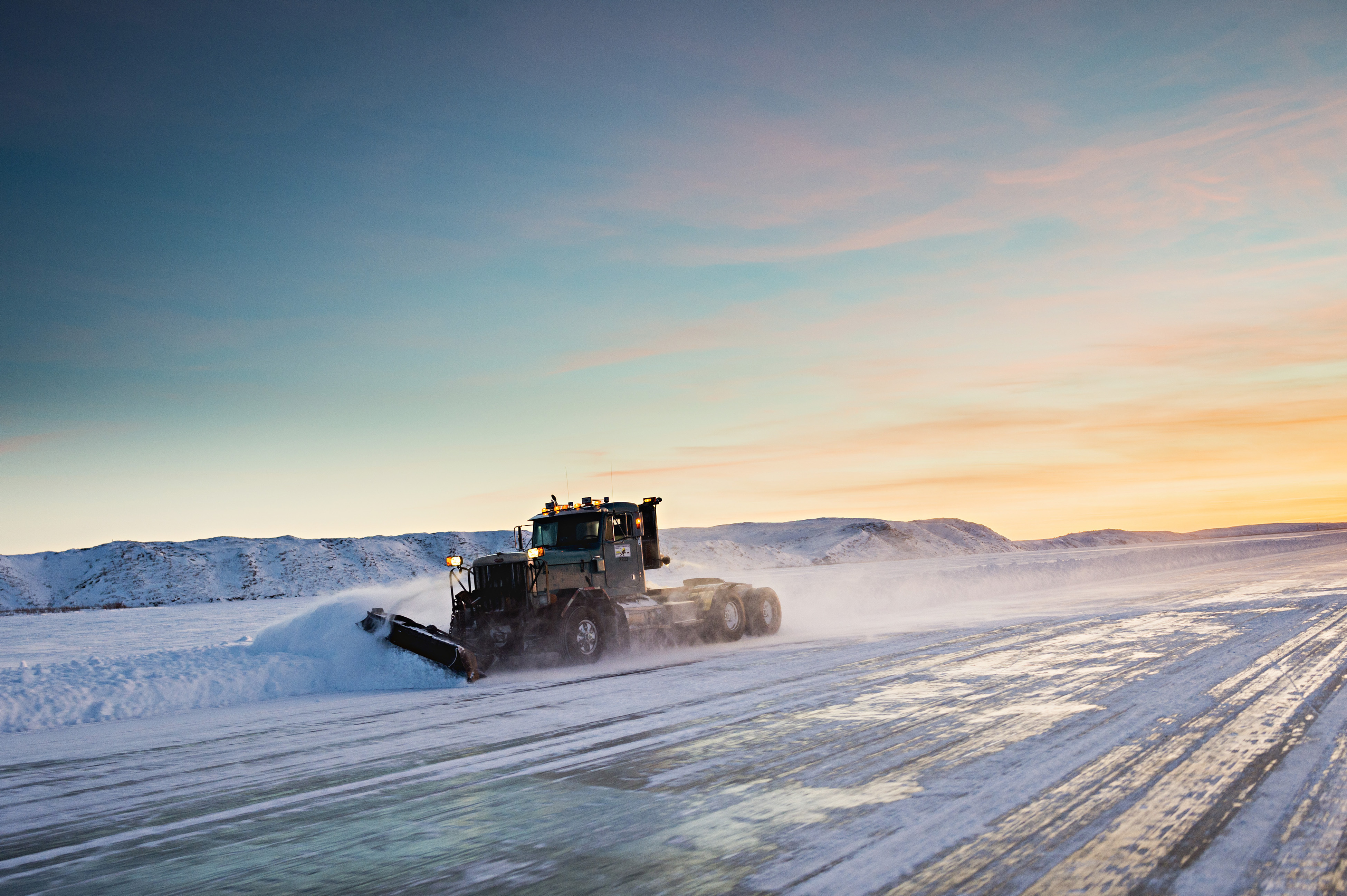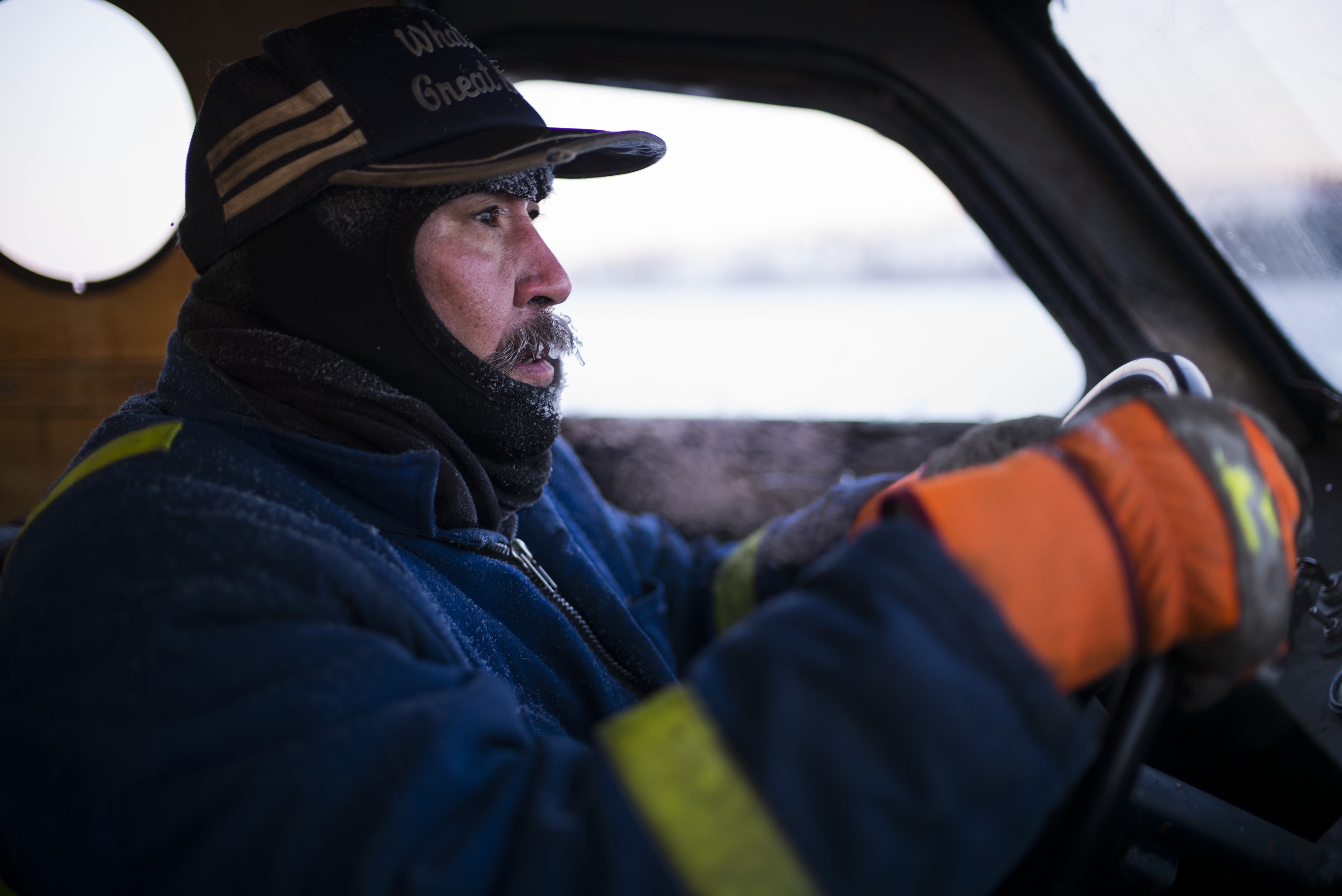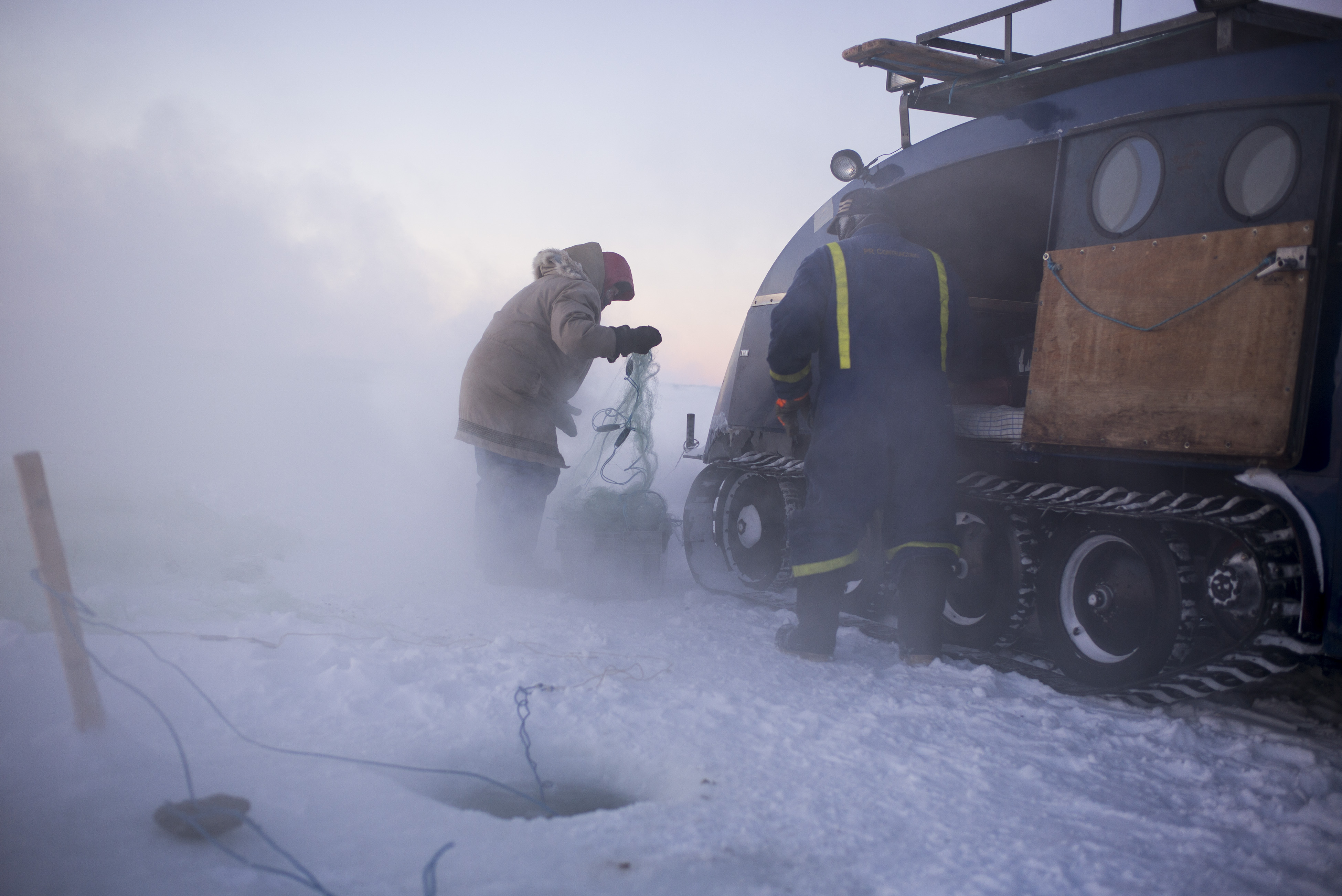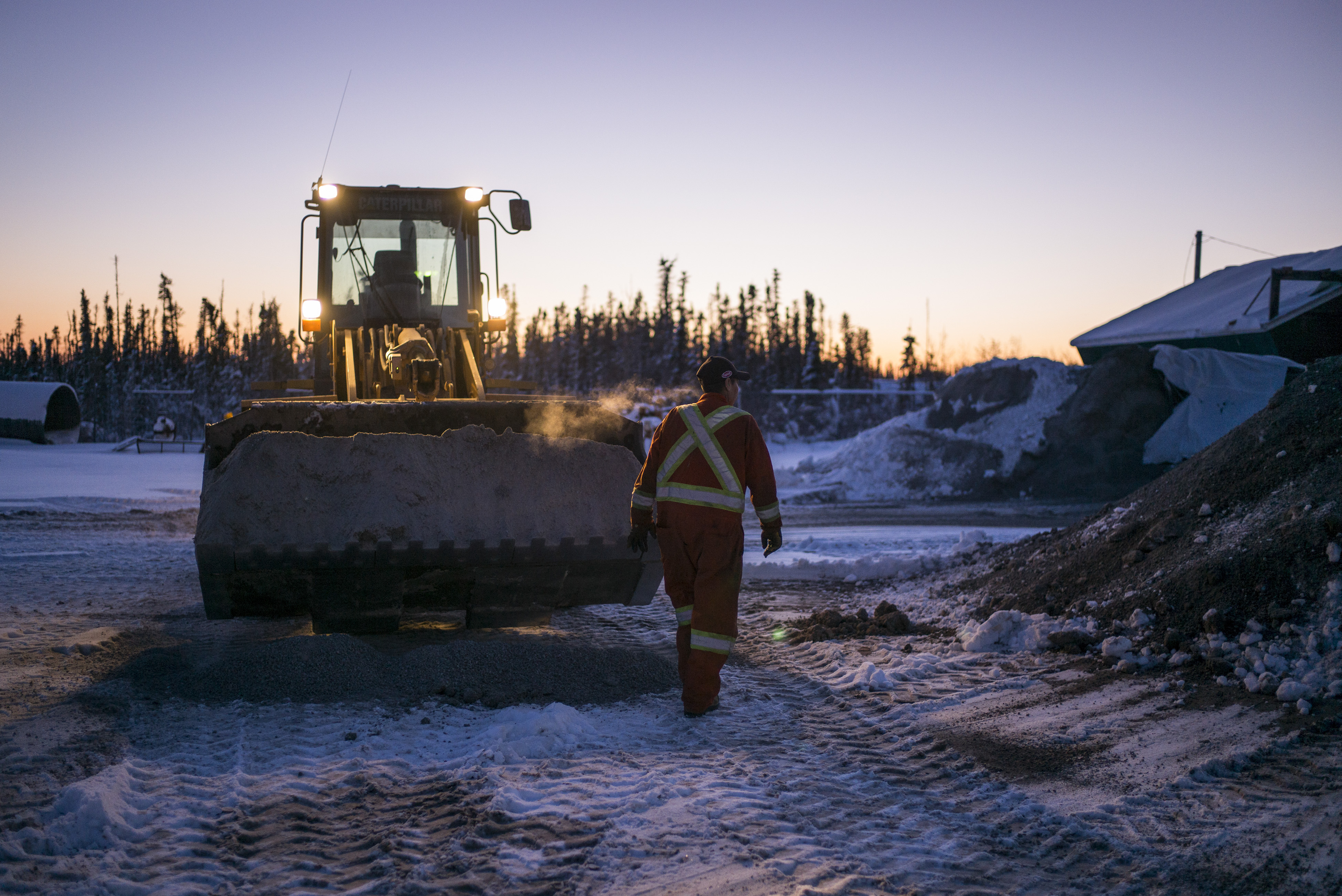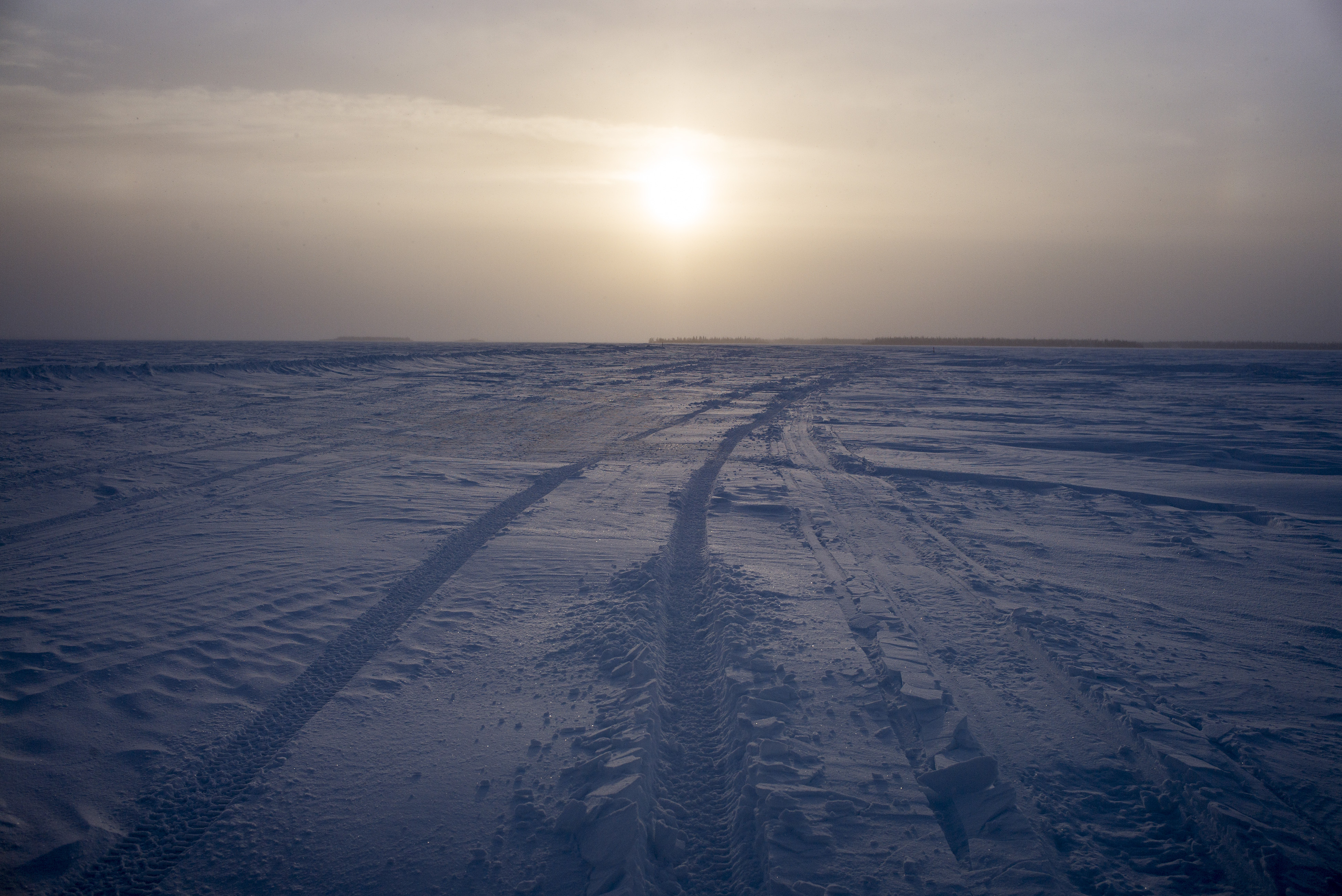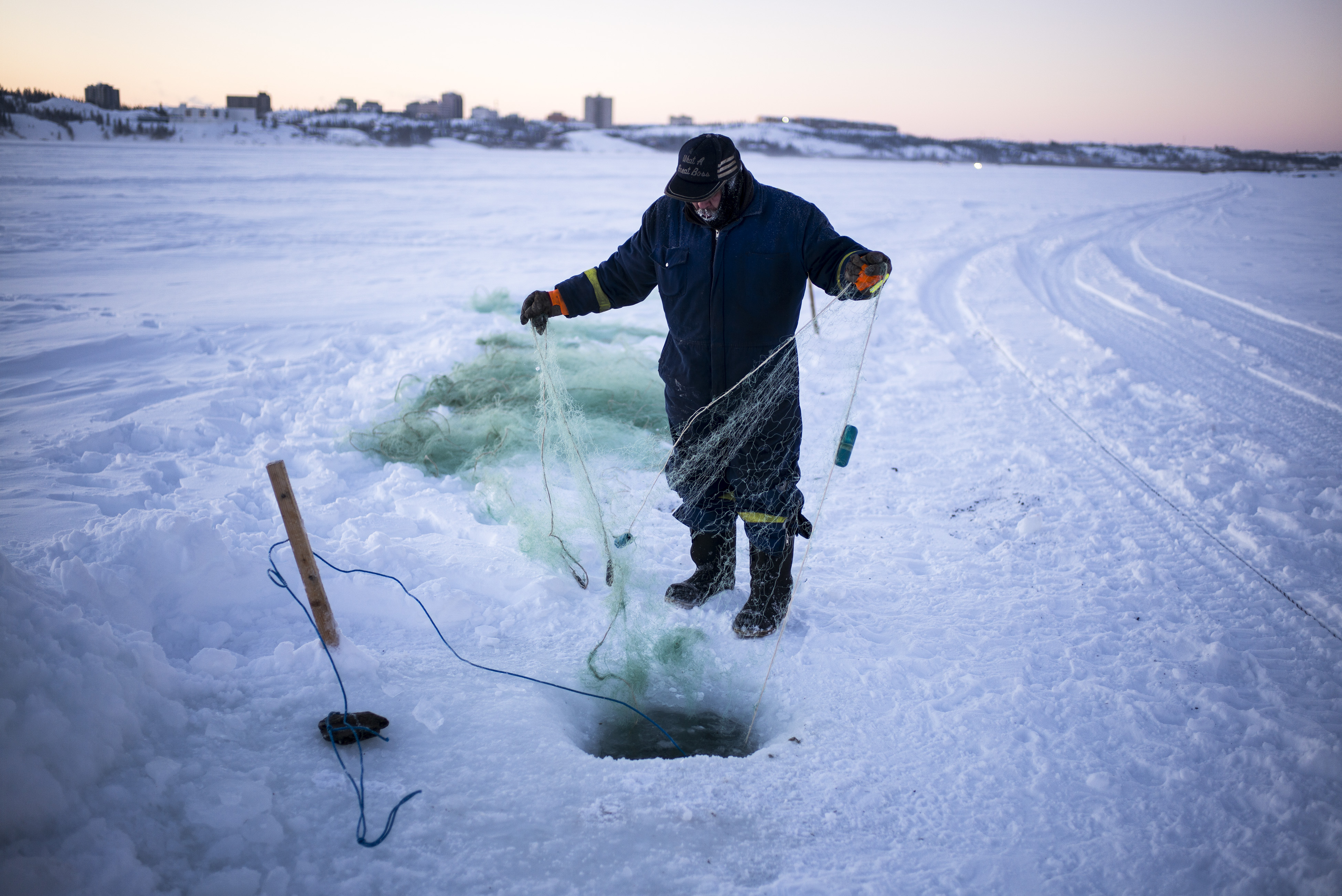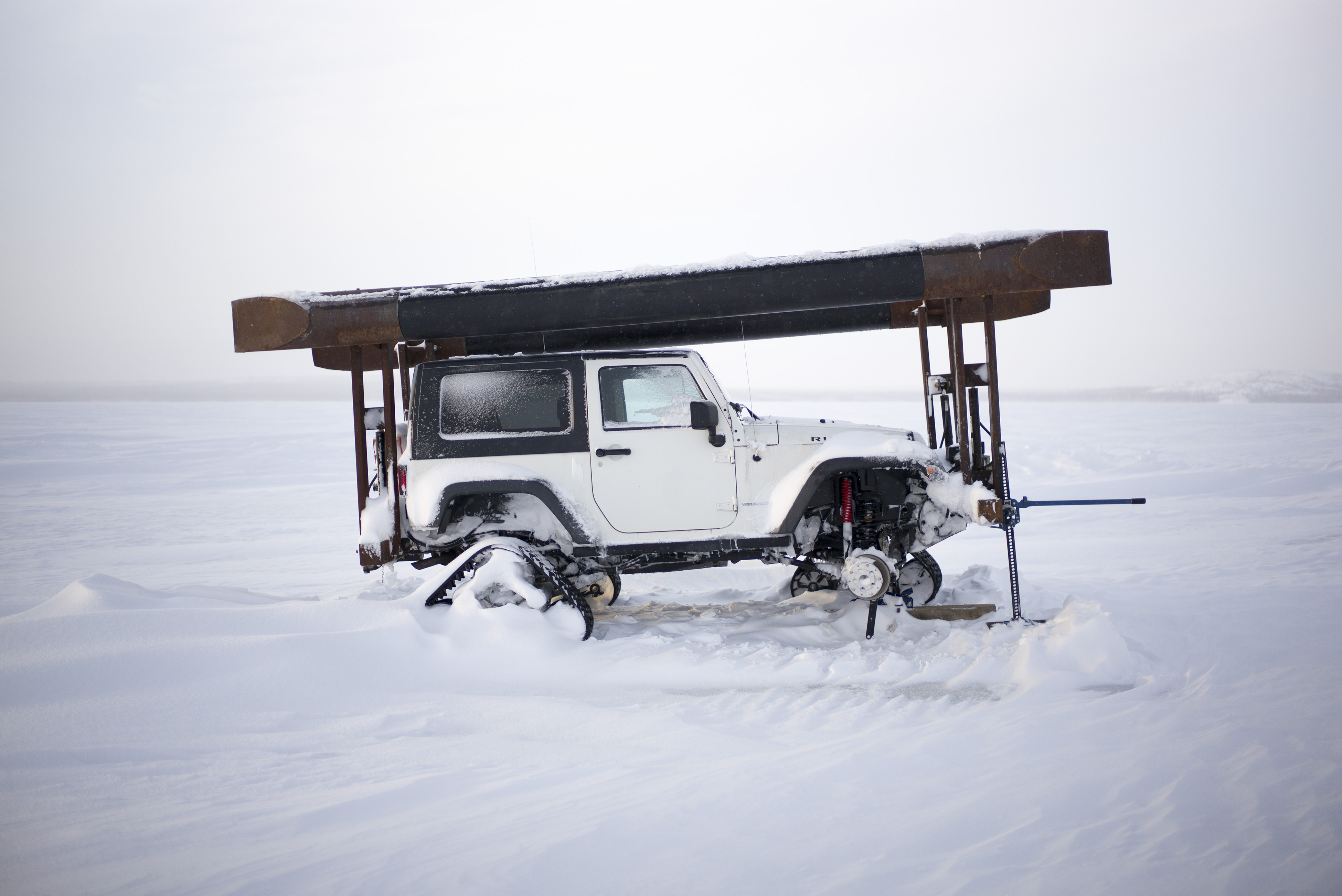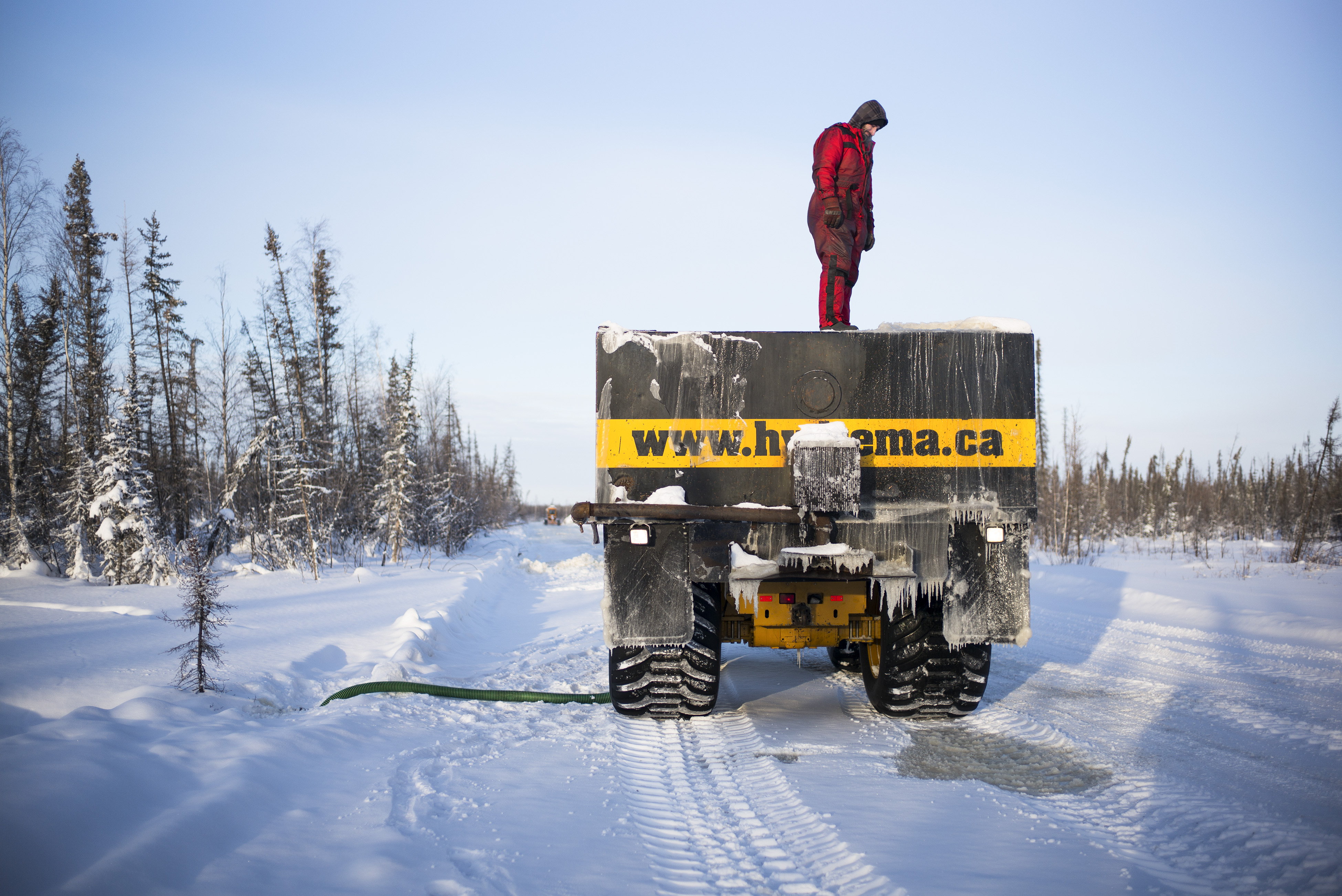Ice roads ease isolation in Canada’s north, but they’re melting too soon
ON THE TLICHO WINTER ROAD, Northwest Territories — In Canada’s northern latitudes, the frigid winter means freedom.
That is when lakes and rivers freeze into pavements of marbled blue ice. For a few months, trucks can haul fuel or lumber or diamonds or a moose carcass to the region’s remote communities and mines that are cut off by water and wilderness, reachable for most of the year only by barge or by air.
But Canada’s ice roads — more than 3,300 miles of them — have been freezing later and melting earlier, drastically reducing the precious window of time that isolated residents rely on to restock a year’s worth of vital supplies, or to simply take a road trip.
Even in the depths of winter, increasingly frequent storms and thawing have made the roads more dangerous and sometimes too weak to use safely, prompting the authorities to close them for days at a time.
“It’s taking longer for everything to freeze up, and the ice isn’t as thick,” said Wally Schumann, the minister of infrastructure for the Northwest Territories. “Ice roads are the lifeline of our communities, and now they’re at risk.”
[Canada is building a highway to the top of the world]
The Canadian authorities say that climate change is causing an array of problems, from increased melting of sea ice to the thawing of permafrost in the Northwest Territories, which is warming four to five times as fast as the global average.
Schumann said climate change was also to blame for the troubles with the ice roads, which are built anew each year by hardy crews using heavy-duty plows, radar and water sprays to add layers of smooth ice that can support even the weight of a tractor-trailer full of mining equipment.
The roads are meant to last from January through April, but much of this year’s network is already unusable. The Dettah Ice Road across Yellowknife Bay closed April 7, about two weeks earlier than average.
As the ice roads have become increasingly unreliable, pressure has grown for Canada to prepare for a future without them, by building all-season land roads — a time-consuming and expensive job, estimated at 600,000 Canadian dollars, or about $450,000 per mile, maintenance not included.
“A lot of people say we’re out of time, we have to deal with this right now,” Schumann said.

For the people in the far north who wait anxiously each winter for the ice roads to reach their marooned communities, the crisis is becoming a matter of life and death.
“These roads are the only way our people can survive,” said Alvin Fiddler, grand chief of the Nishnawbe Aski Nation, which represents 49 indigenous communities in northern Ontario, including 32 that are isolated from Canada’s highway network and electrical grid and depend on the winter road system to replenish stocks of fuel, food and building materials.
Some of those communities nearly ran out of diesel fuel because an ice road opened several weeks late, Fiddler said. Each community needs about 264,000 gallons of fuel to keep the lights on all year, enough to fill 40 tanker trucks. Flying it in would cost an additional $520,000, a prohibitive amount for a small village.
In the vast boreal forests and tundra of the Northwest Territories, the federal and territorial governments are spending about $225 million to build a 93-mile all-season highway to a small Inuit village on the shores of the Arctic Ocean, replacing an ice road. It is due to open in November, with several similar projects in the planning stages.
But that still leaves 10 of the territory’s remote communities dependent on winter roads and ice bridges across lakes, rivers and permafrost, delicate ground that has been frozen for thousands of years. Keeping those roads solid requires constant maintenance by crews with the fortitude to endure hours of toil in the arctic elements.
On a recent visit to the territory, the temperature was minus 18 degrees Fahrenheit and falling as our truck drove smoothly across Marian Lake, 21 miles of snow-covered frozen water. The stretch is part of the 285-mile Tlicho Winter Road, which links remote communities to Yellowknife, the territorial capital.
Michael Conway, who supervises ice-road crews in the North Slave region, turned off the truck, got out and brushed aside some snow to reveal more than 3 feet of gleaming ice beneath. In the almost extraterrestrial silence of arctic winter, a deep pop could be heard below, like the bursting of a distant balloon. A few seconds later came a crackling sound like a candy-bar wrapper being crushed.
“Ice is like a living thing,” Conway said. “It breathes.”

A generation ago, he said, the lake would naturally freeze thick enough for crews to drive a plow across it without concern. But in recent years, the warmer autumns and deeper snow, which acts as an insulator, have made for much thinner natural lake ice, making road construction a cautious slog and delaying openings to traffic.
To ensure that the roads are safe, road crews now use ground-penetrating radar to check the ice’s exact thickness. When it is too thin, they bore a hole for a hose and then spray torrents of lake water out over the surface to freeze and build up additional layers of ice.
Conway said that even those precautions were not always enough. “A guy parked on the ice overnight,” he said, “and when he came back in the morning, his truck was gone.”
[These real ‘ice road truckers’ drive across sea ice and tundra on Alaska’s North Slope]
About 30 miles ahead, deep in the forest, white ptarmigan birds watched as a crew built up the winter road over spongy permafrost for a path toward Whati, an indigenous community of 500 people.
Clint Westergard, 59, was one of the luckier men, cozy in the heated cab of a snowplow equipped with tracks for use in subzero weather. He has been building winter roads for 30 years, work that takes him and his crew away from home and into the frigid wilderness for weeks, sleeping in work camps between shifts. “Some people can’t handle the isolation,” he said over the roar of the machine.
They will not have to work on the road to Whati much longer. Late openings and frequent closings (the road was shut for the season on April 8) have prompted the territory to plan a 58-mile, two-lane gravel road to replace it, at a cost of about $113 million.
Even permanent roads are not immune to the shifting climate. On the region’s main highway back to Yellowknife, entire guardrails have sunk into the roadbed, and a ribbon of asphalt that was once entirely flat now swells and dips because of thawing permafrost.
With a harrowing winter coming to an end, ice-road truckers are wondering how many more years they will be able to stay above water.
“This has been one of most difficult and challenging seasons we’ve ever faced,” said Mark Kohaykewych, president of Polar Industries, whose fleet of 42 trucks hauls freight across northern Manitoba, Ontario and Alberta. About three-quarters of those journeys are on winter roads, he said.
Kohaykewych has been in the ice-road trucking business for eight years, but only in the last two has he had to divert winter cargoes to airports because of unseasonable weather. Freak rainstorms made several ice roads unusable for a while in February, he said, and he spent the first weekend in April rescuing a stranded trucker’s rig that had broken through lake ice.
But at least the truckers can drive away. “The communities are the ones really suffering,” he said. “Without ice roads, how will they fix homes or build schools? You can’t fly in a bulldozer.”
